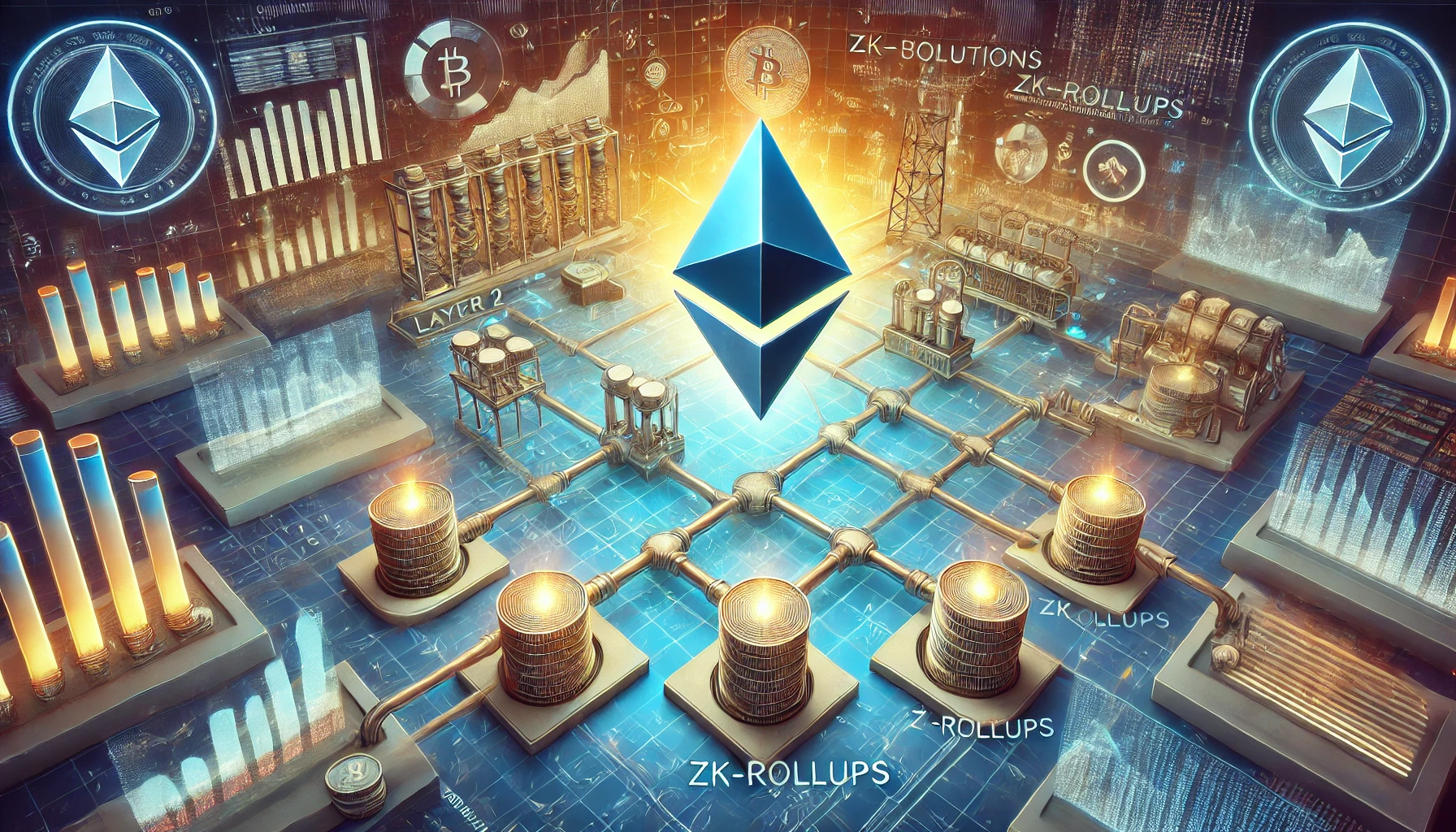The Rise of Layer 2 Solutions: How zk-Rollups Are Slashing Ethereum Gas Fees

What’s the Deal with Ethereum Gas Fees
So, you’ve just tried to buy an NFT or send some Ethereum, and what do you get? A gas fee so high that you feel like you’ve been hit by a virtual truck. Yep, Ethereum gas fees are the blockchain world’s version of rush hour traffic—you don’t want to deal with them, but they’re unavoidable. But don’t worry, because the blockchain world is evolving, and we’ve got something called Layer 2 solutions swooping in to save the day. Layer 2 is like taking the side streets to avoid that highway jam. Enter zk-Rollups, the superheroes of reducing gas fees on Ethereum. But before we dive into the magic of zk-Rollups, let’s break down why Ethereum’s gas fees are so high in the first place.
Why Are Ethereum Gas Fees So Painful
Ethereum is a bit like that one super popular club—everyone wants to get in, but there’s a price. The more people using the network, the higher the demand, which means everyone pays more to push their transactions through. That’s how gas fees work. Every time someone makes a transaction on Ethereum, they’re competing for space in the next block, and those who pay more get their transactions processed faster. This surge in demand causes fees to spike, especially during peak times. It’s like trying to get an Uber during a rainstorm—good luck keeping it cheap. But Ethereum users are tired of the fees, and developers are on the hunt for ways to make transactions more affordable.
The Rise of Layer 2 Solutions
To tackle the issue of high gas fees, Ethereum developers have come up with something clever: Layer 2 solutions. Think of Layer 2 as Ethereum’s cost-saving sidekick. These are secondary frameworks or protocols built on top of the main Ethereum network (Layer 1) that handle transactions off-chain. This allows Ethereum to process more transactions without overloading the network and causing fees to skyrocket. There are several types of Layer 2 solutions, such as sidechains and state channels, but the real buzzword these days? zk-Rollups.
zk-Rollups: The Cool Kid in Town
Alright, so what exactly are zk-Rollups? They sound fancy, but the concept is pretty straightforward. zk-Rollups bundle hundreds (sometimes thousands) of transactions together off-chain, process them, and then roll them up into a single batch. This single batch is then submitted to the Ethereum mainnet. What’s the magic trick here? Instead of every transaction being processed and verified individually on Ethereum’s mainnet, zk-Rollups process them all off-chain and only submit a 'proof' to the mainnet. This massively reduces the amount of data Ethereum needs to handle, leading to—you guessed it—lower gas fees. And when we say 'zk,' we’re talking about zero-knowledge proofs, which are a cryptographic way of verifying that something is true without revealing the actual information. Think of it like showing someone your secret handshake to prove you’re part of the club without telling them how you learned it.
How zk-Rollups Are Slashing Ethereum Gas Fees
Now that we know what zk-Rollups are, how exactly do they save us from gas fee nightmares? By batching transactions and submitting only the essential data to Ethereum, zk-Rollups dramatically reduce the load on the Ethereum network. Less load equals fewer resources required, which equals lower fees for users. Simple math, right? Moreover, zk-Rollups have another neat advantage—they maintain the security of Ethereum’s Layer 1. This is crucial because while some Layer 2 solutions sacrifice a bit of security for the sake of speed, zk-Rollups keep things just as safe as if you were transacting directly on Ethereum itself.
Who’s Using zk-Rollups Right Now
You might be wondering if this tech is already in use. The answer is yes, and it’s gaining traction fast. Projects like Loopring and zkSync are leading the charge with zk-Rollup implementations, enabling users to trade, transfer, and swap assets with a fraction of the gas fees they’d pay on the main Ethereum chain. These solutions are becoming more popular, especially as the DeFi world continues to expand. You don’t want to be paying sky-high fees every time you swap tokens or participate in a liquidity pool, and zk-Rollups provide a sleek way to avoid that.
The Future of Ethereum and zk-Rollups
So, what’s the future look like for Ethereum and zk-Rollups? Bright, to say the least. With Ethereum 2.0 on the horizon and ongoing improvements to Layer 2 solutions, zk-Rollups are poised to play a major role in scaling the network. As the technology matures, we can expect even more projects to adopt zk-Rollups, driving down fees and making Ethereum more accessible to the everyday user. Imagine a world where transacting on Ethereum is as cheap as sending an email—that’s the future zk-Rollups are helping to create.
Conclusion: Is zk-Rollup the Real Deal
In a nutshell, zk-Rollups are changing the game. They’re fast, secure, and most importantly, they slash Ethereum gas fees. With more developers and projects jumping on the zk-Rollup bandwagon, we’re only at the beginning of this technology’s journey. Whether you’re a DeFi enthusiast, an NFT collector, or just someone tired of paying high fees, zk-Rollups are here to make your life a whole lot easier. But here’s the million-dollar question—how soon will zk-Rollups become the standard for all Ethereum transactions?



